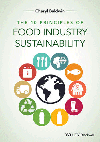Package of the Month: Three-D Packs

“As a rule, I always try to stay on the forefront of new products or new innovations,” says Gamay. “And as a company, we strive to develop those products and ideas and bring them to fruition through research and development. It is research and development that continues to drive the growth of this company, or any company for that matter.”
When Gamay first saw the unique three-dimensional packages containing a soft cheese product for snacking, it wasn’t the product that caught his eye, but rather the packaging itself.
“It was the unique shape of the film, the graphics printed on the outside of the packaging and the convenience offered through the small packages for snacking purposes,” he says.
After much debate and brainstorming, DreamPak had developed a strategic plan to introduce this new form of packaging to the U.S. food industry.
“Initially we had concentrated on presenting the packaging and processing capabilities to large branded food manufacturers across the country, focusing on co-packing various products,” says Cary Gammons, project mgr. “But with the packaging being so new and different, we realized we had a better chance developing our own products and brands and keying in on the natural marketing benefits that the package brings to a product. This includes the unique and various shapes that each ‘pak’ can take, the colors and graphics that can be printed on the film and the convenience of the individuality of each pak.
“We quickly realized that all of these qualities lend themselves very nicely to marketing new products toward kids,” Gammons says. “So immediately we put together our Jungle Treats brand, using eight jungle animal designs for kids to easily identify with.”
Jungle Treats filled with either chocolate-flavored candy or wild berry fruit snack debuted in early 2002.
“After establishing an identity with the jungle animal characters, we launched the Cheese Animals product,” Gammons says.

For all the cheese items, the product is manufactured in a steam injection cheese cooker where the ingredients are processed and pasteurized for product quality and safety. The cheese is then pumped through jacketed lines into a holding tank where it is blended with other batches for consistency.
Paks are formed from two reels of thermoformable plastic material. Sheets are pre-heated and fed through a set of sealing molds. The two sheets, or webs, are sealed together with the exception of the area to be formed. Forming molds blow compressed air through a channel between the webs in order to form the shaped cavities. After forming, the air blowing channels are trimmed and the sheets are cut into strips. Strips proceed to a filling area and cheese from the holding tank is pumped into the cavities. After filling, strips move to the next station in the assembly where filling necks of the cavities are pre-heated (to avoid wrinkles) and sealed.
Strips are cut into individual units by one of two ways, depending on desired final outcome. A straight cutting can be obtained with a cutting die integrated in the machine, thus producing paks having a rectangular shape such as the Cheese Animals, or a contour cutting can be obtained with a separate cutting die positioned at the machine out-feed, thus producing paks with a contoured shape, such as the round Cheese Solo’s.
“Cheese Animals debuted this past fall,” says George Wenger, executive v.p.-sales and marketing. “They are currently sold throughout the Midwest in SuperTarget, as well as select regional grocery chains, with goals to expand nationally.
“Large regional and national supermarket chains have expressed interest in developing proprietary products,” Wenger adds.
Looking for a reprint of this article?
From high-res PDFs to custom plaques, order your copy today!





